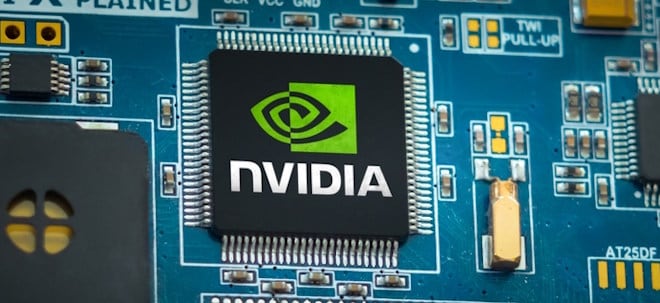Rigetti vs D-Wave: Which Quantum Computing Stock Holds More Promise?
Werte in diesem Artikel
Quantum computing is one of the most closely watched frontiers in technology, with the potential to reshape industries from drug discovery to logistics. For investors, it also represents one of the rarest opportunities: the chance to get in early on companies aiming to build the foundations of a trillion-dollar market. Among the pure-play names, Rigetti Computing RGTI and D-Wave Quantum QBTS stand out, but their visions for the future could not be more different.Rigetti is betting on superconducting qubits and a chiplet-based modular architecture, pursuing the holy grail of universal, gate-based quantum machines. D-Wave, by contrast, has focused on quantum annealing, a specialized approach already being deployed in real-world optimization problems for paying enterprise clients. One is chasing scalability toward fault tolerance, while the other is carving commercial niches today. This faceoff takes a closer look at how RGTI and QBTS are progressing on their respective roadmaps, and what that means for investors weighing short-term traction against long-term potential.Price Performance of RGTI & QBTSShares of Rigetti have gained 110.3%, while QBTS stock has surged 213.5% in the year-to-date period.Image Source: Zacks Investment ResearchTwo Technologies: Superconducting Qubits vs Quantum AnnealingRigetti continues to pursue the classic superconducting route, but with a pragmatic, semiconductor-style twist: modular chiplets that enable the company to stitch together larger machines without rebuilding a monolithic processor each time. That approach has produced a tangible step forward, Cepheus-1-36Q, a four-chiplet 36-qubit system that Rigetti recently made generally available. The company states that this system halves the two-qubit error rates compared to its prior Ankaa-3 hardware and achieves a median two-qubit gate fidelity of approximately 99.5%.For investors, this matters because those error-rate improvements are the clearest short-term signal that Rigetti’s stack, from in-house fabrication through system calibration and cloud access, is converging from lab demos toward usable, higher-quality hardware that can be useful to real customers and partners as scale increases.D-Wave, meanwhile, has doubled down on quantum annealing, a specialized architecture that targets optimization problems rather than universal quantum computing. In May 2025, the company announced general availability of Advantage2, its sixth-generation annealer, through its Leap cloud service while beginning physical deployments with enterprise and research customers. Advantage2 emphasizes higher qubit counts, greater connectivity and improved coherence and D-Wave has coupled this hardware launch with global collaborations and MOUs to bring annealing-based solutions into practical use cases. For investors, the appeal lies in D-Wave’s emphasis on real-world use today, showing paying customers and early adoption rather than waiting years for universal fault-tolerant machines.Two Commercial Strategies: Government Contracts vs Enterprise AdoptionRGTI still leans heavily on government and research partnerships as its core revenue lever, and it recently scored a solid win. In September 2025, Rigetti, in collaboration with QphoX, was awarded a three-year, $5.8 million contract from the U.S. Air Force Research Laboratory to advance superconducting quantum networking. These contracts not only generate revenue but also serve as strong technical validation, keeping the lights on while Rigetti scales its technology. For investors, the downside is that revenues can be lumpy and dependent on renewals or new grants, but having government backing helps extend the runway as the company works toward commercial viability.QBTS, on the other hand, is betting on enterprise adoption and real-world use, rather than relying primarily on government contracts. The company has signed deals and implemented pilot programs across various industries, including logistics, energy, and manufacturing, where its annealing hardware is currently used for optimization and scheduling. Its strategy is to prove commercial value now, so that paying customers and usage metrics fuel momentum and credibility. For investors, that means more immediate revenue visibility, but also more pressure to show business results rather than relying on future upside of technology breakthroughs.Who Is Better Positioned for Quantum Advantage?Rigetti’s roadmap builds on its chiplet-based superconducting architecture, with the 36-qubit Cepheus-1 system marking an important step toward scale. Management has reaffirmed plans to deliver a 100+ qubit system by the end of 2025 and expand to 1,000 qubits within the next four years. To support this push, Rigetti has secured a $250 million partnership with Quanta Computer, aimed at scaling production and enabling integration into hybrid cloud environments. With in-house fabrication capabilities and proprietary calibration methods, Rigetti is positioning itself to steadily move from research milestones toward large-scale, universal quantum systems that could one day deliver true fault tolerance.D-Wave’s path, on the other hand, centers on advancing its annealing technology, with the Advantage2 system now generally available both through the Leap cloud platform and on-premises installations. This sixth-generation machine is designed for higher qubit counts, stronger connectivity, and improved performance on complex optimization problems.D-Wave’s strategy is to prove immediate utility by embedding annealing into hybrid quantum-classical workflows, while also developing a gate-model program in parallel to broaden its long-term potential. By focusing on commercial use cases that enterprises can adopt today, D-Wave is positioning its platform as a practical tool that demonstrates tangible business value even before fault-tolerant universal machines arrive.How Do Estimates Compare for RGTI & QBTS?The Zacks Consensus Estimate for RGTI’s 2025 sales implies a year-over-year decline of 19.65%. For 2025, the loss per share is projected to be 9 cents compared with 36 cents a year ago. The earnings estimates have been stable over the past 30 days.Image Source: Zacks Investment ResearchThe Zacks Consensus Estimate for QBTS 2025 sales implies year-over-year growth of 181.5%. For 2025, the loss per share is projected to be 24 cents compared with 75 cents a year ago.Image Source: Zacks Investment ResearchRGTI or QBTS: Which Is a Better Pick?Rigetti and D-Wave represent two distinct approaches within quantum computing. Rigetti is advancing superconducting qubits with a modular chiplet design aimed at scaling toward universal fault-tolerant systems, while D-Wave is leaning on quantum annealing to carve out early commercial use cases in optimization. Both companies currently carry a Zacks Value Score of ‘F,’ signaling that investors are still paying a premium for access to this emerging sector.Where the two diverge is in growth and momentum profiles. Rigetti holds a Growth Score of ‘C’ and a strong Momentum Score of ‘A,’ reflecting steady technical progress and improving investor sentiment around its execution. D-Wave, by contrast, has a weaker Growth Score of ‘F’ and Momentum Score of ‘D,’ pointing to softer expectations and slower traction in the near term. Importantly, both stocks currently carry a Zacks Rank #3 (Hold), suggesting investors may want to wait for clearer catalysts before taking positions. You can see the complete list of today’s Zacks #1 Rank (Strong Buy) stocks here.While D-Wave’s annealing-based systems highlight its niche in optimization and early enterprise adoption, Rigetti’s stronger growth and momentum profile, combined with its scaling roadmap, make it the more compelling option at this stage for investors seeking exposure to the long-term quantum computing race.Zacks' Research Chief Names "Stock Most Likely to Double"Our team of experts has just released the 5 stocks with the greatest probability of gaining +100% or more in the coming months. Of those 5, Director of Research Sheraz Mian highlights the one stock set to climb highest.This top pick is a little-known satellite-based communications firm. Space is projected to become a trillion dollar industry, and this company's customer base is growing fast. Analysts have forecasted a major revenue breakout in 2025. Of course, all our elite picks aren't winners but this one could far surpass earlier Zacks' Stocks Set to Double like Hims & Hers Health, which shot up +209%.Free: See Our Top Stock And 4 Runners UpWant the latest recommendations from Zacks Investment Research? Today, you can download 7 Best Stocks for the Next 30 Days. Click to get this free report Rigetti Computing, Inc. (RGTI): Free Stock Analysis Report D-Wave Quantum Inc. (QBTS): Free Stock Analysis ReportThis article originally published on Zacks Investment Research (zacks.com).Zacks Investment ResearchWeiter zum vollständigen Artikel bei Zacks
Übrigens: US-Aktien sind bei finanzen.net ZERO sogar bis 23 Uhr handelbar (ohne Ordergebühren, zzgl. Spreads). Jetzt kostenlos Depot eröffnen und Neukunden-Bonus sichern!
Ausgewählte Hebelprodukte auf Quantum Computing
Mit Knock-outs können spekulative Anleger überproportional an Kursbewegungen partizipieren. Wählen Sie einfach den gewünschten Hebel und wir zeigen Ihnen passende Open-End Produkte auf Quantum Computing
Der Hebel muss zwischen 2 und 20 liegen
| Name | Hebel | KO | Emittent |
|---|
| Name | Hebel | KO | Emittent |
|---|
Quelle: Zacks
Nachrichten zu Quantum Computing Inc Registered Shs
Analysen zu Quantum Computing Inc Registered Shs
Keine Analysen gefunden.

